There are so many different dog breeds and they are all unique in their own way. They can have different coat colors and different physical appearances, but also different eye colors.
And just like us humans, doggies can also have some beautiful colors in their eyes that simply take your breath away. From icy blue to standard brown, the dog eye color chart is a wonderful mix of mesmerizing shades.
Would you like to know which dog eye color is the most common, or which one is the rarest? If you are interested, keep on reading because we’ll bring you all the glistening shades of those beautiful eyes that reflect your pup’s soul.
Let’s get started!
Dog Eye Color Chart
| Dog Eye Color | Dominant | Recessive |
|---|---|---|
| Brown | YES | NO |
| Blue | YES | YES |
| Green | NO | YES |
| Amber | NO | YES |
| Hazel | NO | YES |
| Heterochromia | NO | YES |
| Pink (Albino Dogs) | NO | YES |
1. Brown Eyes
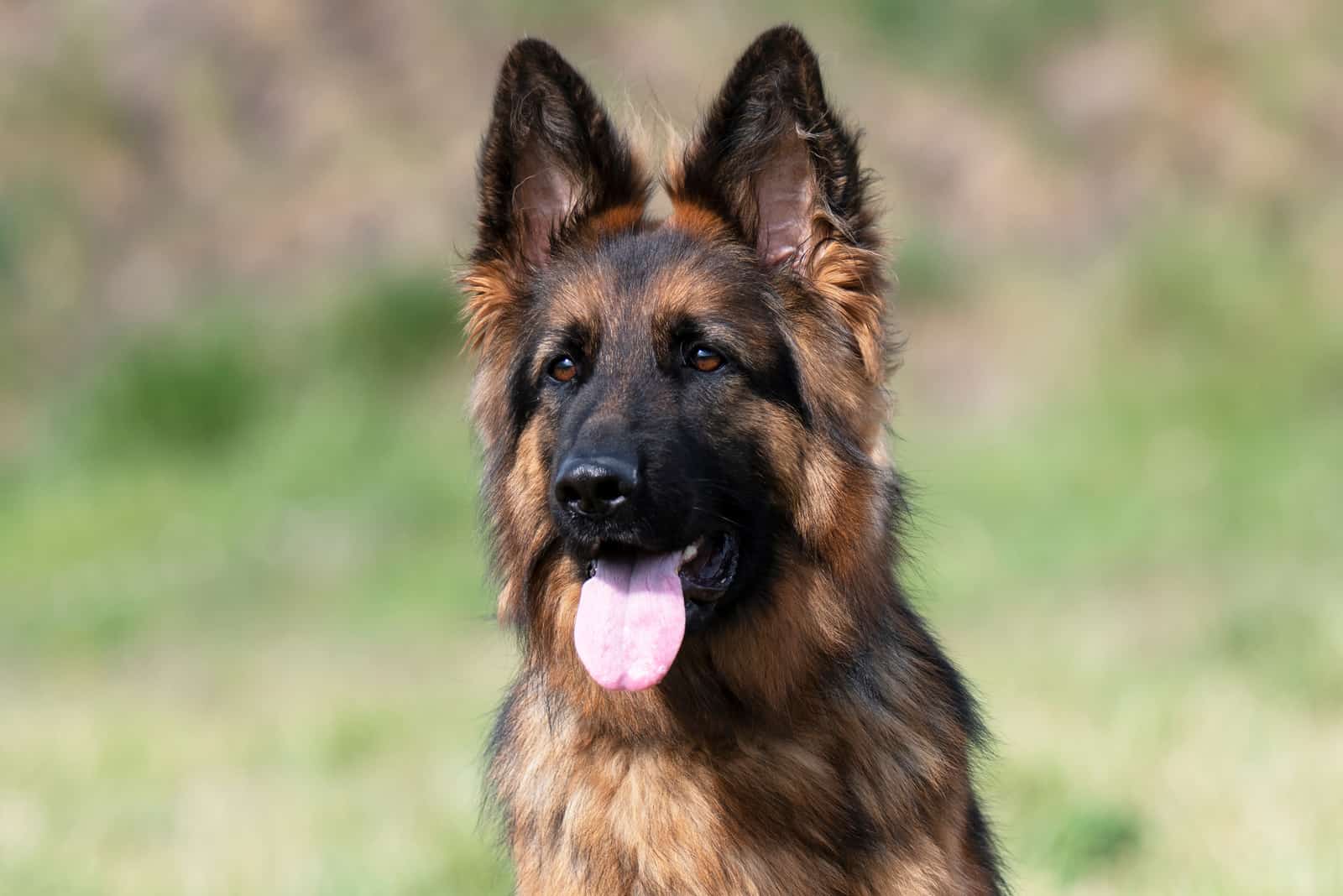
First on our dog eye color chart is the most common eye color—the color brown. You have probably seen a lot of doggies sporting this color, from light brown shades to dark brown.
Many dogs are genetically predisposed to a brown eye color, including purebreds and mixed breed dogs. When the dog’s genetics produce higher levels of melanin, the brown eye color is set.
Certain character traits can also be attributed to certain eye colors. For example, dogs that have brown eyes are considered to be loyal, gentle, and of strong character. If they are raised in a loving and firm way, they will definitely be one of the most loyal pups out there.
Brown Eyed Dogs
• Labrador Retriever
• Golden Retriever
• German Shepherd
• Beagle
• Pomeranian
• French Bulldog
2. Blue Eyes
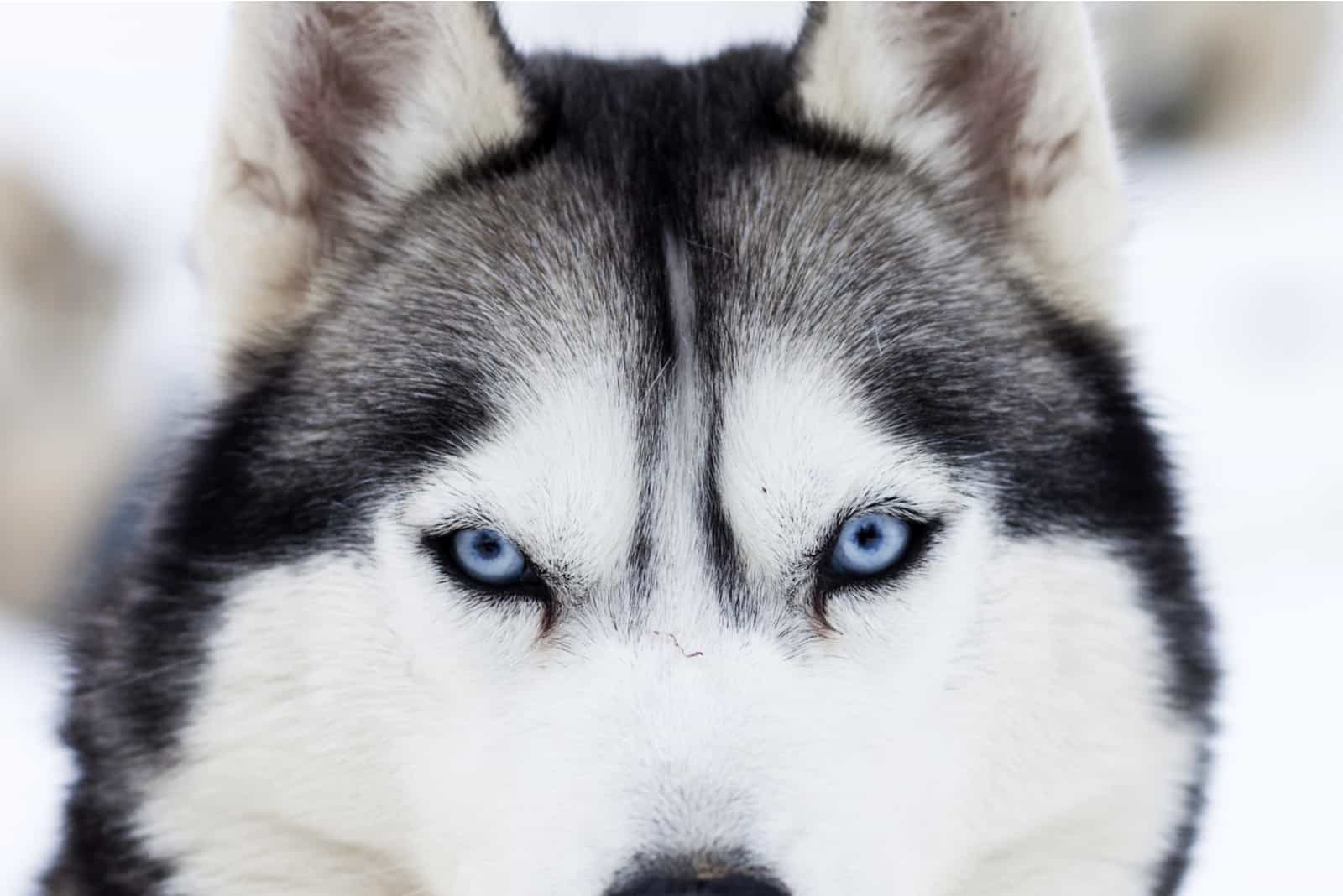
The second on our list is the enchanting blue color. Blue-eyed dogs are definitely on the more unique and rare side. Some dogs have the blue color in their breed standard (such as the most famous blue-eyed dog, Siberian Husky), while others get it through recessive genes.
The blue eye color is often also connected to certain coat colors and patterns, like merle or piebald, whose genes cannot produce a lot of melanin, which explains the lighter colored eyes.
Blue-eyed dogs are considered to be attributed to strong character animals that love to be mentally and physically challenged. If you are unable to provide them with that, they will certainly try to find something for themselves to do.
If your dog’s eye color is not blue, but you notice it changing to a somewhat hazy blue, you should immediately go to your veterinarian because it can be a sign of a serious health issue.
Breeding two dogs that are merle gene carriers can also result in many health problems and is often seen as very non-ethical.
Blue Eyed Dogs
• Siberian Husky
• Australian Shepherd
• Weimaraner
• Border Collie
• Dachshund
• Cardigan Welsh Corgi
3. Green Eyes

Green eyes are considered to be the rarest dog eye color. Some people even doubt their existence because they have never come across a dog with green eyes. Although all dog eye colors are beautiful, these green ones are truly a sight to see.
The merle gene that can be found in the making of the blue eye color is also present in the color green, but dogs with green eyes have a little amount of melanin that creates patches with the merle gene, while blue-eyed dogs do not.
Even though this eye color is pretty rare, there are some dogs that are more likely to have these adorable emerald eyes. The American Pit Bull Terrier and the Pomsky are probably the two most common examples, but there are also some other dog breeds.
Green Eyed Dogs
• The American Pit Bull Terrier
• Pomsky (Pomeranian X Siberian Husky)
• Australian Shepherd
• Weimaraner
• Border Collie
• Labrador Retriever mixes
4. Amber Eyes
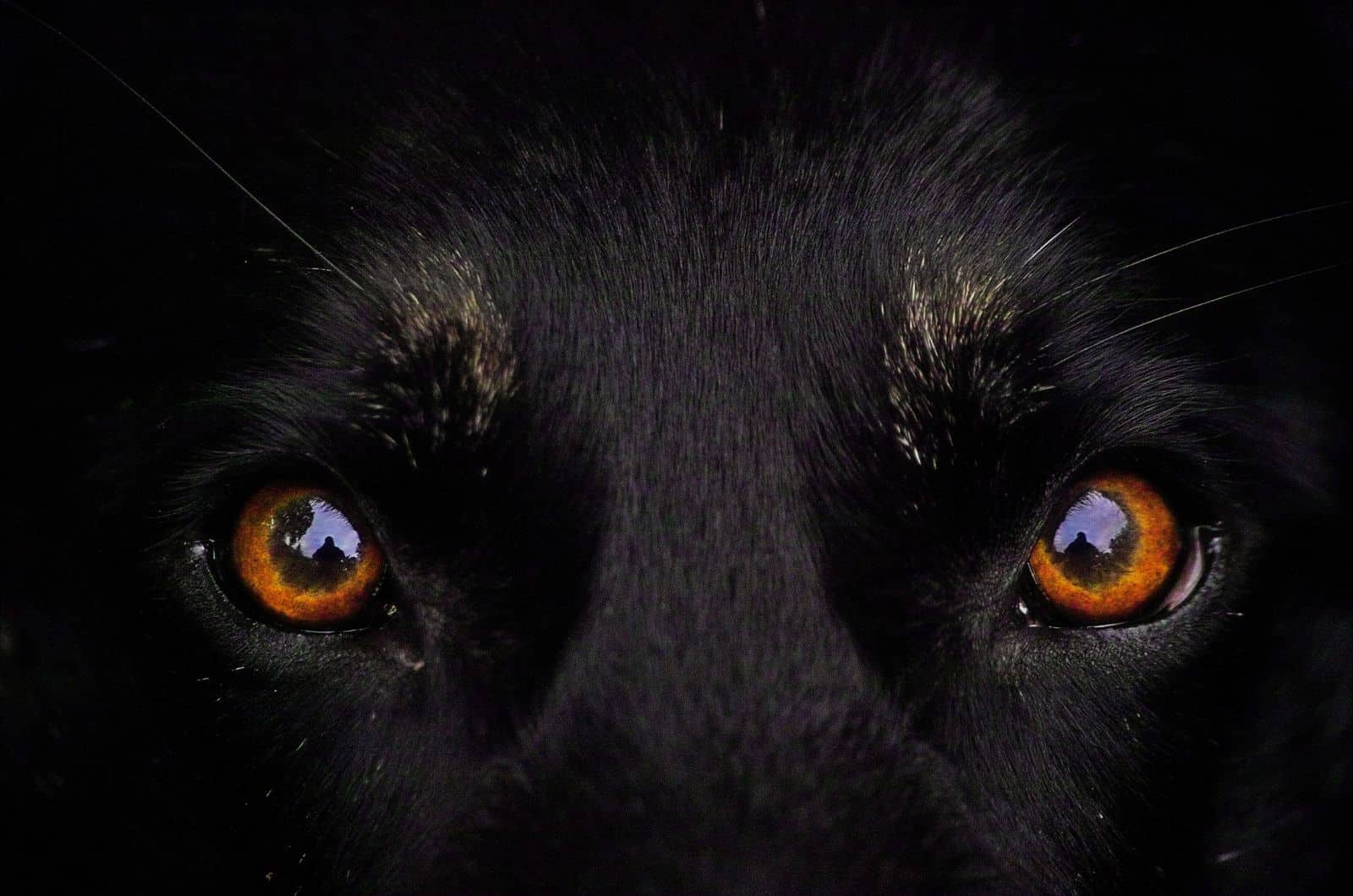
The amber eye color is yet another not very common dog eye color. This eye color is usually defined as a blend of light-blown, orange, and yellow.
Usually, there is a connection between some breeds with certain coat colors and this eye color. Dogs with liver, Isabella, and a blue coat color are more likely to have an amber eye color as well.
This is due to the dilution gene, which dilutes the black melanin color into different coat colors, but since melanin is found in eyes, it also affects eye color.
Amber Eyed Dogs
• Weimaraner
• Australian Shepherd
• Rhodesian Ridgeback
• Anatolian Shepherd
• Chesapeake Bay Retriever
• Boykin Spaniel
5. Hazel Eyes
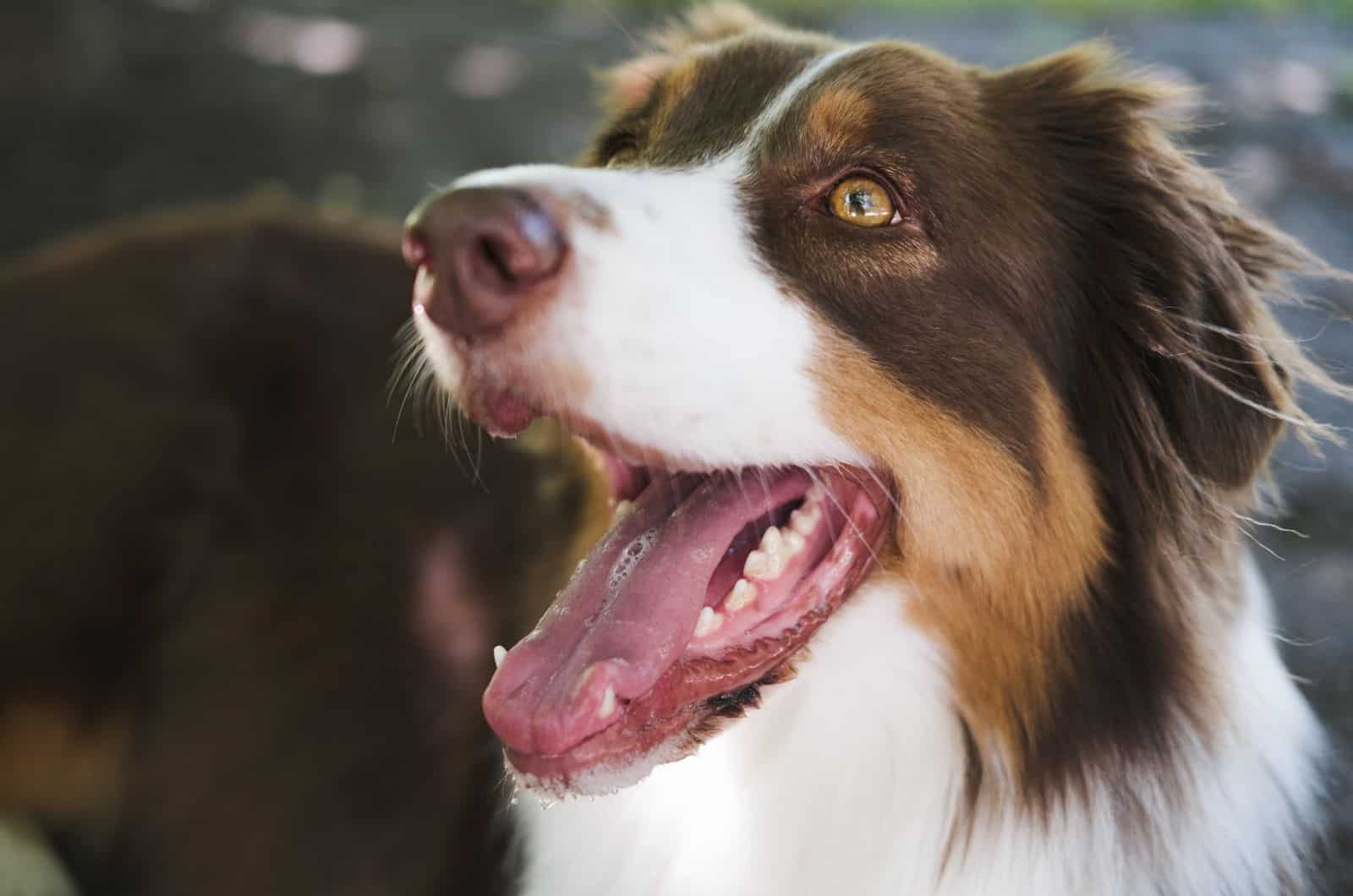
Hazel eyes are also considered to be very rare colored eyes. The majority of hazel-eyed dogs are born with blue eyes, but as they grow older, their eye color might change to hazel. This color can be best described as an endearing shade of sunlight.
Hazel eyes have less pigment than brown eyes, which is probably due to the influence of other genes, such as the merle gene that affects the coat color as well as the color of the eyes.
Hazel Eyed Dogs
• American Foxhound
• Australian Shepherd
• Basenji
• Beagle
• Bloodhound
• Cairn Terrier
6. Heterochromia In Dogs
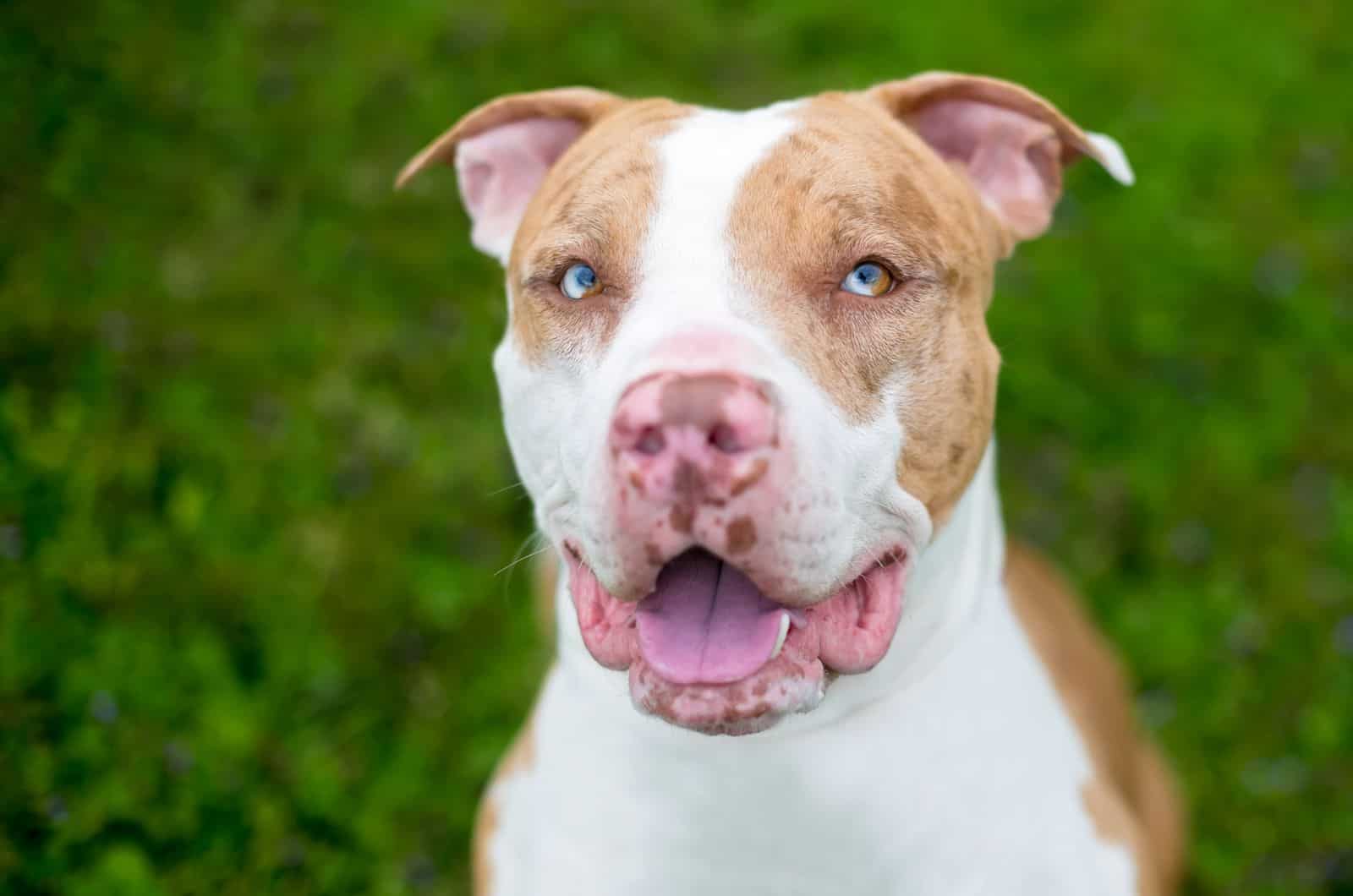
Heterochromia is a term used to describe two different colored eyes, coming from the greek words; “heteros” meaning different, and “chroma” meaning pigmentation.
This phenomenon does not occur only in dogs but also in some other animals, such as cats and horses, and even sometimes in humans.
Heterochromia in dogs is often hereditary, and it is caused by a lack of melanin in one eye, causing it to appear blue and whiteish, while the other one is a deep brown. It can also be caused by injury or health issues.
There are three different types of heterochromia: complete, sectoral, and central.
Complete Heterochromia
Complete heterochromia is the term used to describe the phenomenon when one eye is completely differently colored to the other eye (the whole iris of the eye is a different color to the iris of the other eye). Usually, one eye is bluish, and the other one is brown.
Dogs With Complete Heterochromia
• Australian Cattle Dogs
• Australian Shepherds
• Dalmatians
• Siberian Huskies
READ ALSO: 13 Best Dog Food For Huskies: Top Foods You Have To Try Out!
Sectoral Heterochromia
Sectoral heterochromia, sometimes even known as partial heterochromia, is when just part of the eye is a different color to the other eye.
Sectoral heterochromia is a little bit more widespread than complete heterochromia, as there are several colors in one iris. This type of heterochromia is often seen in dogs with merle genes and is a result of recessive genes (D & B series).
The Siberian Husky is the only non-merle dog breed that can have sectoral heterochromia.
Dogs With Sectoral Heterochromia
• Catahoula Leopard Dog
• Dachshund
• Great Dane (harlequin coat pattern)
• Pembroke Welsh Corgi
• Border Collie
• Shetland Sheepdog
• Chihuahua
Central Heterochromia
Central Heterochromia is somewhat similar to the sectoral one, but this time, only the center of the iris is a different color. The bluish coloring radiates from the pupil mixing with the other color, which is mostly brownish. Often, this pattern is seen in concentric circles.
The central heterochromia is often seen in the same dog breeds that we have mentioned for dogs with sectoral heterochromia.
FUN FACT: There have been many legends throughout history about dogs with different colored eyes, such as that they can see heaven and earth at the same time or that they protect humanity.
7. Albino Dogs
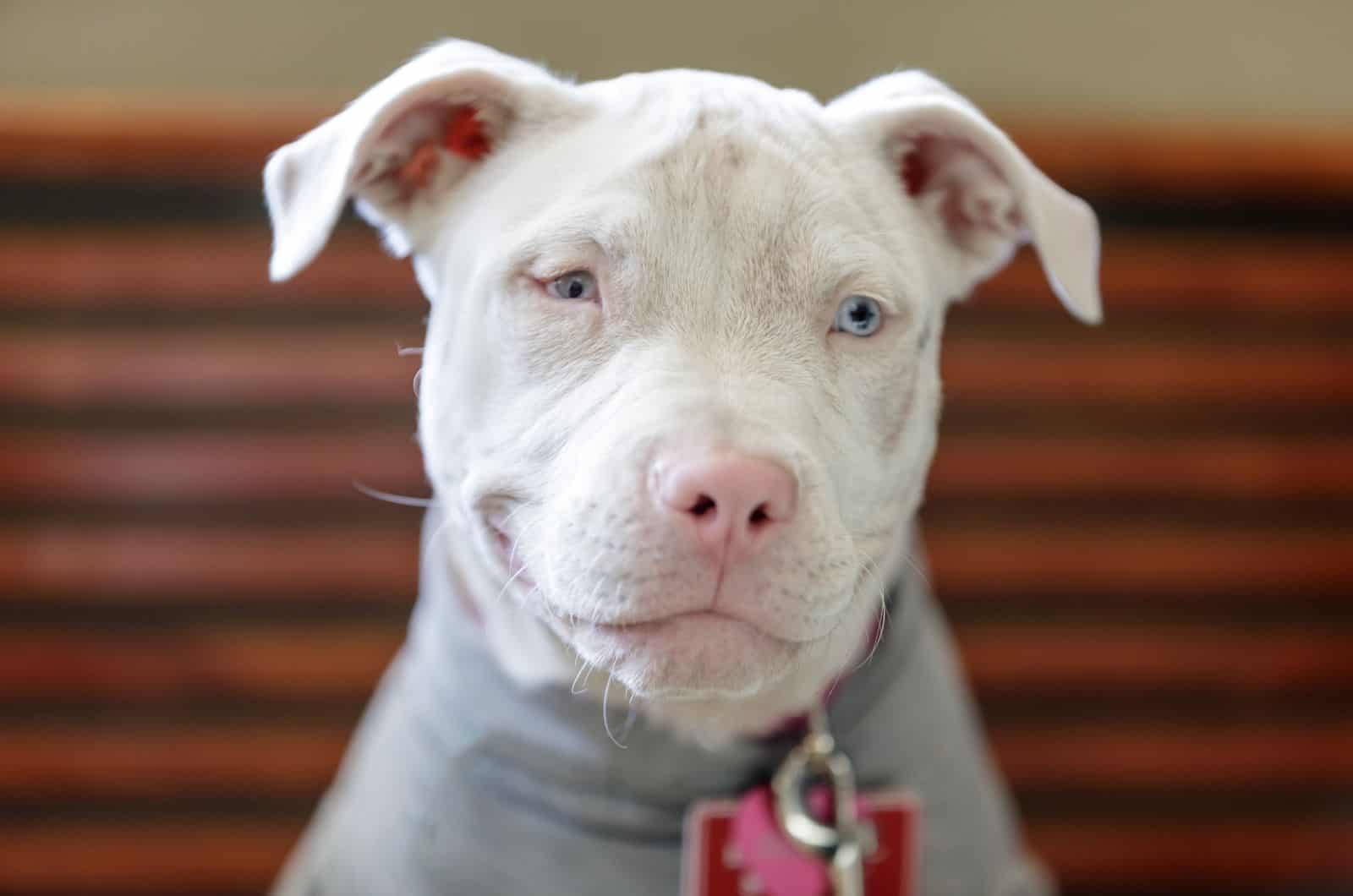
Albinism is a rare genetic condition that is characterized by a complete lack of pigmentation in skin, hair, and the eyes. The true sign of albino dogs is, in fact, pink eyes; therefore, a white dog with blue eyes would not be considered an albino dog.
In order for albinism to take place and an albino pup to be born, both parent breeds need to be carriers of the albinism gene.
Some dog breeds are more prone to developing this condition, for example, Border Collies and Great Danes. Albino dogs require a little bit more care and because of their condition, they are more prone to different health issues, like sunburn or cancer.
RELATED: Why Do Dogs Like To Lay In The Sun? Understanding Your Pooch
How Dogs Get Their Eye Color
By looking at the dog eye color chart above, we can see that there are different, equally beautiful, eye colors. But, the question is—how exactly do dogs end up with certain colors, and what causes dogs to have different eye colors?
Many factors determine the color of a dog’s eyes. The amount of melanin, the lineage of the dog, genetics, and the color of his fur all influence the color of the pup’s eyes. However, most commonly, the dog’s eye color is the result of the concentration of melanin in the dog’s body.
The higher the amount of melanin, the darker the eye color will be. The amount of melanin does not only influence the eye color but also the dog’s coat color and skin color, as well.
Those dogs that have different colored eyes also have different concentrations of melanin in their eyes, which means that, for example, if one eye is brown and the other is blue, the lighter-colored eye has less melanin than the darker-colored eye.
Do Puppies Eyes Change Eye Color?
When puppies are born, they usually have closed eyes for the first two to three weeks, and it is impossible to see their eye color. After this period, they should start opening their eyes, and you get the chance to see their beautiful little eyes.
Most of the time, puppy’s eyes are blue, glossy, and hazy in the beginning, although some puppies might have brown-colored eyes from the start. This usually depends on the breed and the environment that they are born into.
It takes several weeks for their eyes to mature and their eyesight to sharpen. By the time they are one month old, their eye color might have started to change. It can change to true blue or change into some other color that we have mentioned above, most commonly brown.
By the time the puppies are six months old, they should have their permanent colors set, and they shouldn’t change when they are older unless the dog has a health issue that causes eye color changes.
RELATED: What Colors Can Dogs See? Are They Colorblind?
Health Issues Connected To Dog Eye Colors

There are certain health issues that have been linked to certain dog eye colors or some health problems that can result in eye color changes. This can be a sign of a very big problem, so, as soon as you notice this, take your pup for a vet check-up to see what is going on.
Let’s see what are some of those health problems are:
Deafness
Deafness in dogs can be either inherited or acquired and according to the American Kennel Club, about 5 to 10% of dogs in the whole USA suffer from it.
Cochleosaccular deafness is the most common type of hereditary hearing loss that is associated with a white coat color and blue eye color; however, the eye color is not in any sense, an indication of the disease.
Blue eye color as a result of an absence of pigment in the dog’s iris is most commonly associated with blue-eyed dog breeds such as Dalmatians, English Setters, Bull Terriers, or English Cocker Spaniels.
It can first be seen between one to three weeks of age, and pups can be either deaf in one ear or both.
Blindness
In some dog breeds, a blue eye color is related to health issues such as blindness; however, this does not mean that every dog with blue eyes will have problems with vision.
Blue eyes can be the result of the merle gene, which causes less pigmentation in dogs’ irises and can also be connected with some eye defects and blindness, just like deafness.
Two dogs carrying a merle gene shouldn’t be bred together because of the risk of different eye diseases, for example, when leftover tissues (persistent papillary membranes) do not form blood vessels and therefore, cause problems with the dog’s vision.
Cataracts
Cataracts are defined as a cloudiness in the dog’s eyes that prevents him from seeing clearly. It is usually inherited and seen in older dogs; however, there are some records of adult dogs and even puppies that have had it.
Cataracts usually progress really fast. It usually starts as a faint white color within the colored part of the dog’s eye, and then it becomes more obvious.
Not all cataracts cause blindness in dogs, but it is important to consult a professional in order to prevent the disease from progressing.
If you notice that your dog’s eye color is changing, you need to take him for a vet exam immediately, so they can determine what exactly is going on and what treatment he needs.
Nuclear Sclerosis
Nuclear Sclerosis is a disease that is similar to cataracts but not the same. Also called Lenticular Sclerosis, it is a medical term used to describe a bluish discoloration or transparent haze in the dogs’ lens that does not significantly affect their vision.
This cloudiness is usually seen in middle-aged dogs and seniors and is seen as a normal change that happens with aging.
Glaucoma
Glaucoma is a painful eye disease that is caused by increased pressure in the eye, which can result in slow, chronic progression of blindness, or sudden, acute pain and blindness.
Some of the symptoms include dilated pupils, redness and swelling of the eye, increased watery discharge, squinting, and a loss of appetite. This disease can also give out a bluish tint.
RELATED: Hair Loss Around Dogs’ Eyes: Causes Of Canine Alopecia
Interstitial Keratitis
Interstitial keratitis is another eye disease that is caused by an inflammation that can also produce a bluish or whiteish tint over the eyes.
There are various types of interstitial keratitis, but most of them are treated with topical corticosteroids that effectively alleviate pain, blurriness, and discomfort.
Retinal Dysplasia
Retinal Dysplasia (RD) is usually a genetically inherited disease that does not cause pain to the dogs but does affect their vision. RD means a malformation within the retina or simply an abnormal development that causes vision impairment.
Some of the symptoms include color changes within the eyes, behavioral changes, difficulty walking, difficulty recognizing people and objects, and bumping into things.
Uveitis
Uveitis is an infection in the part of the eye called the uvea, which is made up of the iris, the ciliary body, and the choroid.
Different things can cause this inflammation, but the signs are usually an intense redness of the whole eye, cloudiness, squinting, sensitivity to light, and severe pain.
The treatment usually includes medication to reduce the inflammation and the pain, which needs to be prescribed by a specialist, so you should take your dog to the veterinarian as soon as you notice something different with your dog.
Why Do Animal Eyes Shine In The Dark?
All of us have once walked outside in the dark and seen a dog or cat, or some other kind of animal, pass in front of us somewhere, or should I say, we have seen their eyes!
We all know that animal eyes glow in the dark, but do we know why this happens?
There is a reason why dogs’ eyes shine in the dark. Most animals have a special reflective layer called the tapetum lucidum, which is located at the back of the retina and enhances the amount of light that is absorbed.
This allows animals to see things clearly in the dark. The shining part is actually really helpful to us humans too, because it allows us to see those animals in the dark that we wouldn’t be able to otherwise.
The eyeshine seems to have different colors when looked at from different angles, but in dogs, it is usually a whitish to bluish light.
To Sum Up
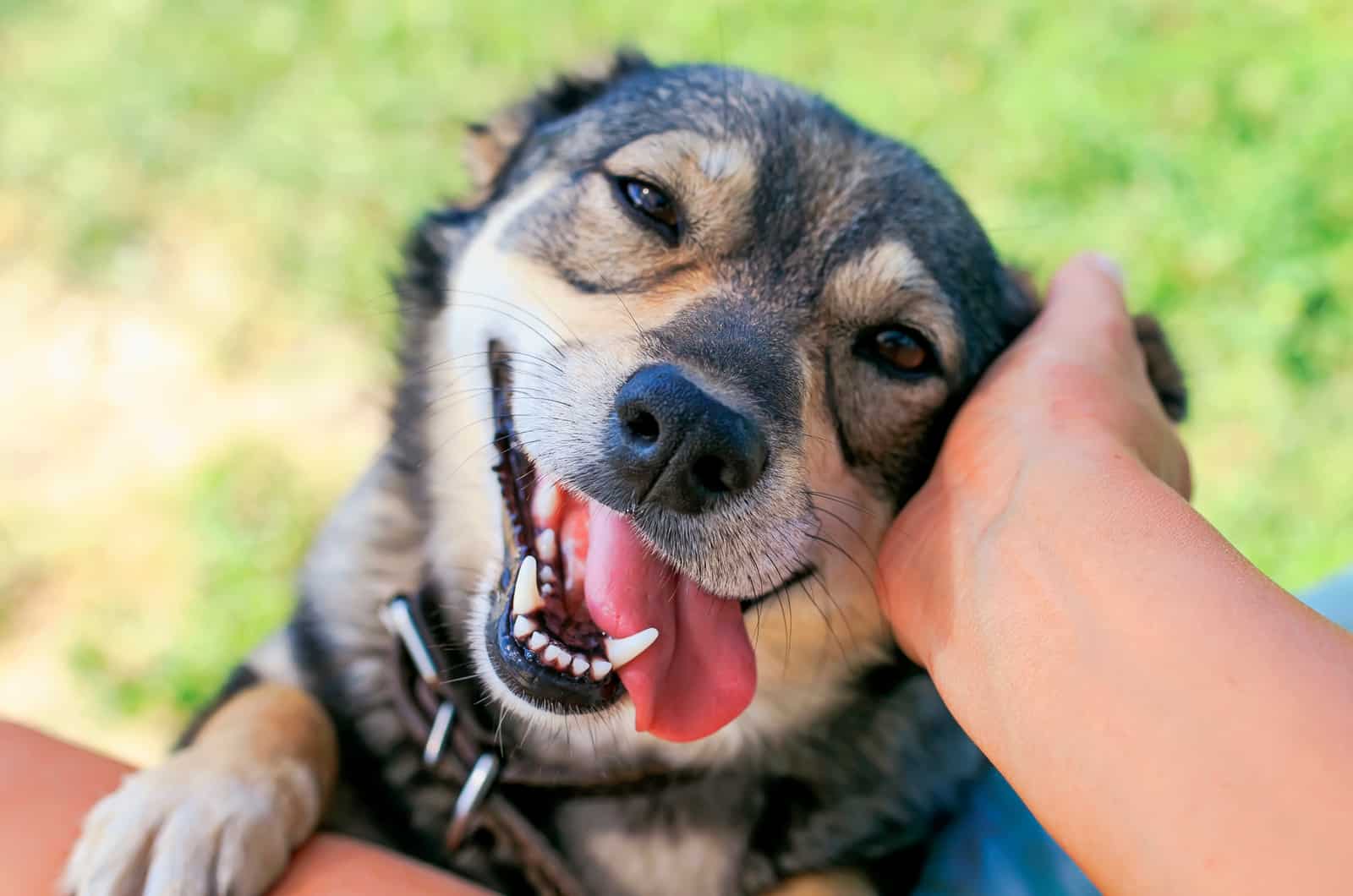
Now that you have read the article, you know everything about the mesmerizing dog eye colors. From standard brown to extremely rare green, this dog eye color chart has guided you through the beautiful doggie eye shades that are the window to your pup’s soul.
Every dog’s eye color is beautiful though, and no pup should be discriminated against because of the color of his eyes. The important thing is what is inside.
The truth is that some colors are indeed more fascinating, as they are extremely rare, but that does not mean that they are any better than other colors. Which color you choose is down to your own personal preferences, but try to give a chance to all dogs.
Which dog eye color is your favorite?
Read Next:
• Dog Tongue Color Chart: What Color Is A Sign Of A Healthy Dog?
• Dog Vomit Color Chart: 7 Shades Of Barf













